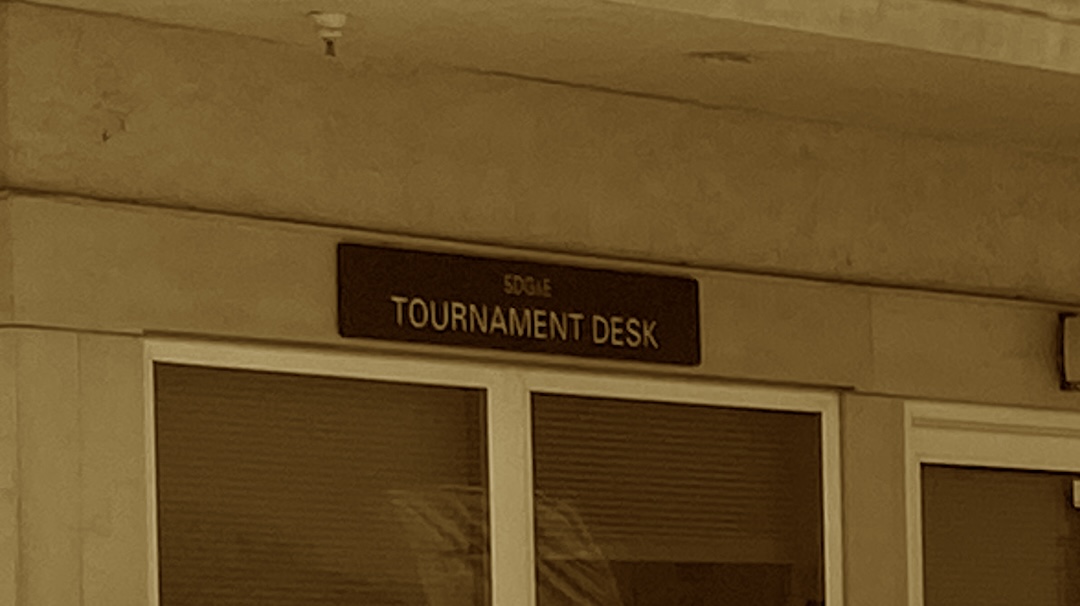Ever since I played in the inaugural NTRP 50+ Championships in 2018, I have been lobbying hard for an update to the shortened tie-breaker used at the event. At that time, I tried to explain the fundamental issues to the USTA representative onsite at that initial tournament. I have continued to blog about it every once in a while in the intervening time. My failure to effectively convey the inherent issues with the short-set/Fast4 tie-break game for doubles to anyone with the power to fix it has been a continuous source of frustration for me.
The Problem in Blunt Terms
The current format completely screws over the doubles team that serves second during the tiebreak game when playing shortened format. That is an inflammatory statement that some will probably take exception to. However, it is the end result expressed in the starkest terms that I can muster without using profanity. Everybody needs to understand the impacts.
The team that serves first in the short-set tiebreak game enjoys the luxury of serving every point from the same end of the court that each player used throughout the preceding set. Meanwhile, the team that serves second is forced to play every single service point from the opposite end of the court than they previously served from. That disparity is neither equitable nor fair. The tie-break game is a travesty for doubles.
There are many reasons why each player on a doubles team might be better suited to serve from one end or another. However, the various reasons and permutations do not matter. It is patently unfair to force one team to serve every point from an unfamiliar side, while the other team is not required to make any change at all. This must change.
The Fundamental Problem is the Fast4 Tie-Break Game Itself
In “Tie-Break: Short Set vs Fast4” published way back in 2020, I observed that the USTA appeared to be leaning toward preserving order-of-service rather than preservation of consistent service ends. It is the right decision per pure tennis law. Unfortunately, it also unfairly disadvantages one team.
If it makes anyone feel better, the fundamental problem is the Fast4 tie-break game itself. The format forces a false dichotomy between preserving or breaking the order of service. The correct answer is actually “none of the above.” The short-set/Fast4 tie-break should never be used at all for doubles.
Doubles matches at the NTRP National Championships should exclusively use the well-established Coman tiebreak game. It should be played first to 7 and win by two. In one fell swoop, the USTA can solve all of the issues of inequity and confusion by making this simple and obvious decision.
I am amazed that this terribly inequitable tie-break game has been inflicted on NTRP National Doubles participants and the officials for 5 years now without correction. I think… I hope…. that things might finally be about to change.
I was right… and then I was wrong… and then I was happy that things spun out of control.
In “How Much is Enough? (Never Say Never)“last weekend, I referenced one of my earlier posts indicating that the USTA was leaning toward the (inequitable) order of service option over the preservation of service ends. On the first day of last weekend’s 18+ NTRP National Championships, a player at my hotel showed me an information sheet that indicated that the service end would be preserved. Additionally, prior to my first match onsite, another player at the tournament told me that he had also seen an information sheet that reflected the preservation of service end during the tiebreak game.
I was already conceding that it would be listed as yet another thing I got wrong in the “How Much is Enough? (Never Say Never)” post. I was thinking through how I would write about it. As a matter of fact, I was quite happy to be wrong about that particular prediction. Unfortunately, my elation was short-lived.
I observed as many tie-break games as I could throughout the tournament. The rules implementation was inconsistent. Some matches were played preserving the service end. Others honored the order of service. When players summoned the umpires to the court, it did not seem to make much of a difference in the consistency of who served the third and fourth points of each tie-breaker. Of course, I wasn’t in a position to hear the questions that brought the officials to the court in the first place.
The Trophy Husband was concurrently playing the 55+ NTRP National Championship event in Arizona last weekend. He played quite a few short-set tie-break games during that event. Consequently he was regaling me with complaints of the inconsistent officiating decisions about service order that occurred during his own matches. His doubles partnership is a rightly lefty combination. When playing on a sunny day, service end really matters.
My First Real Doubles Fast4 Tiebreak-Game
Until last Sunday afternoon, I had never experienced a Fast4 Doubles tie-break game in anything other than a practice match. This first experience could have (and arguably should have) been a non-event. However, controversy ensued, and the debate escalated to the fullest extent possible. I was perversely delighted to experience how these events unfold. It was worth it because I learned a lot through that process.
Tomorrow I will share the details of that drama. The episode sparked some insight into how the format has managed to escape organizational scrutiny for so long.




In the sixth paragraph, third sentence, ” a tually” should be “actually”.
In the next to last paragraph, third sentence, I think “the debate escalate the debate” should be simplified to “the debate escalated”.
That’s why we play Coman tiebreaker in Texas
Yep. I mention that fact in tomorrow’s post which will go out first thing tomorrow morning.
So who is the Fast 4 format for? I have yet to find a player that actually prefers a quick shoot-out!
The whole point of the Coman process is to continue the format of service rotation so everyone serves from the end they have served previously in the set.
In a ‘normal’ set to ‘6 by 2’, a tie-break is played at 6-6. Why is a Fast 4 tie-break played at 3-3 instead of 4-4?
In the UK, the only reason I have heard for using the Fast 4 format is to cram more matches per player into a day….. which may be good for the tournament organisers but is it good for the players? Juniors, maybe – but players above that age bracket?
One of the great things about the regular scoring system to ‘6 by 2’ is the possibility of turning around momentum in a set. This is hardly possible in Fast 4.
The only advantage, I see, in Fast 4 is when there’s a blow out and instead of losing 6 games a player only loses 4 and the pasting is over more quickly!